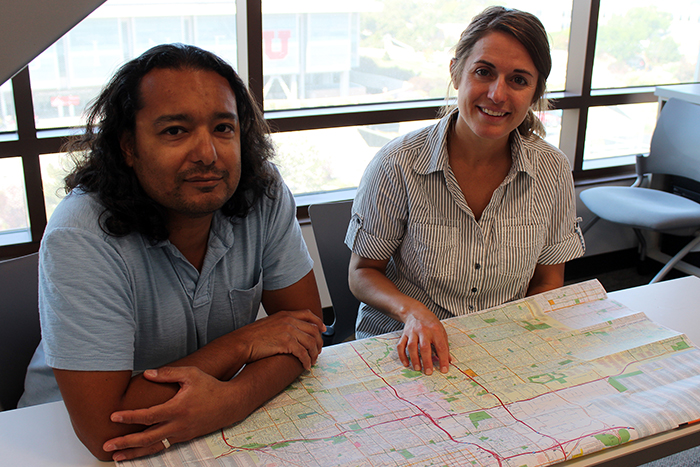See More, Do More:
The Strength of Interdisciplinary Teams
 In 2012, Kara Byrne was working as a graduate research assistant and social worker at the Hartland Partnership
Center on the west side of Salt Lake City. As she worked with residents, housing
was consistently their most pressing need; the thing they felt most anxiety over.
“Housing,” she says, “is a foundation for families. It’s a foundation for communities.”
Housing—evictions in particular—was also important to the agencies she was working
with. With a foundation in participatory action research, when determining a research
topic for her doctoral dissertation, she followed the needs of the community.
In 2012, Kara Byrne was working as a graduate research assistant and social worker at the Hartland Partnership
Center on the west side of Salt Lake City. As she worked with residents, housing
was consistently their most pressing need; the thing they felt most anxiety over.
“Housing,” she says, “is a foundation for families. It’s a foundation for communities.”
Housing—evictions in particular—was also important to the agencies she was working
with. With a foundation in participatory action research, when determining a research
topic for her doctoral dissertation, she followed the needs of the community.
Since then, she’s graduated from her PhD program and works full time as research faculty at the College of Social Work. Since then, evictions and housing continue to be large-scale issues that need attention. And since then, Department of Geography Assistant Professor Rich Medina has joined her research efforts. Their current work includes a multi-facet project cross correlating county eviction records with the American Community Survey (ACS) census data and mapping that raw data using Geographic Information System (GIS) mapping technology. Additionally, they have a strong qualitative component, conducting interviews with people who were recently evicted or forced out of their homes in order to analyze the components and circumstances that precede and follow eviction.
Both Drs. Byrne and Medina are emphatic that their research is stronger because they work together. It’s not only mixing raw statistical data with qualitative interviews, but also the mixing theoretical frameworks. Dr. Byrne explained, “I can’t learn about evictions fully without pulling in other methods of research. I can talk about systemic racism, something he’s not as familiar with, but I can’t map it. Once he does that, it creates a more full story of what is happening.” Dr. Medina added, “Our potential for solutions is strengthened by a view from different angles. Before this project, I knew nothing about housing insecurity, but the spatial science we have applied works well. Maps are intuitive and often help us understand problems more clearly.”
So far the data supports the sparse research in this area. There are correlations between evictions and demographics with increased evictions for racial minority and low-income families. Says Dr. Byrne, “There isn’t a lot of research in this area, so this research is important to corroborate the findings that are out there.” These data show the same issues exist here in our local community, she explains. “Those hard numbers are helpful to tell the story that Salt Lake County isn’t any different. The problem exists here.” Drs. Byrne and Medina hope these data will be used by government leaders to inform change in the community. “There are inequalities everywhere,” said Dr. Medina, “but those that affect housing security are some of the worst. Everything starts with stable shelter. Our research shows that there is a much higher likelihood of being evicted from a home if you are an underrepresented minority. While that does not necessarily indicate mistreatment by a landlord, it does provide evidence to say that the problem is worth looking into.” Dr. Byrne added, “The important piece of this project is how it could effect change—how these findings can inform policy.”
